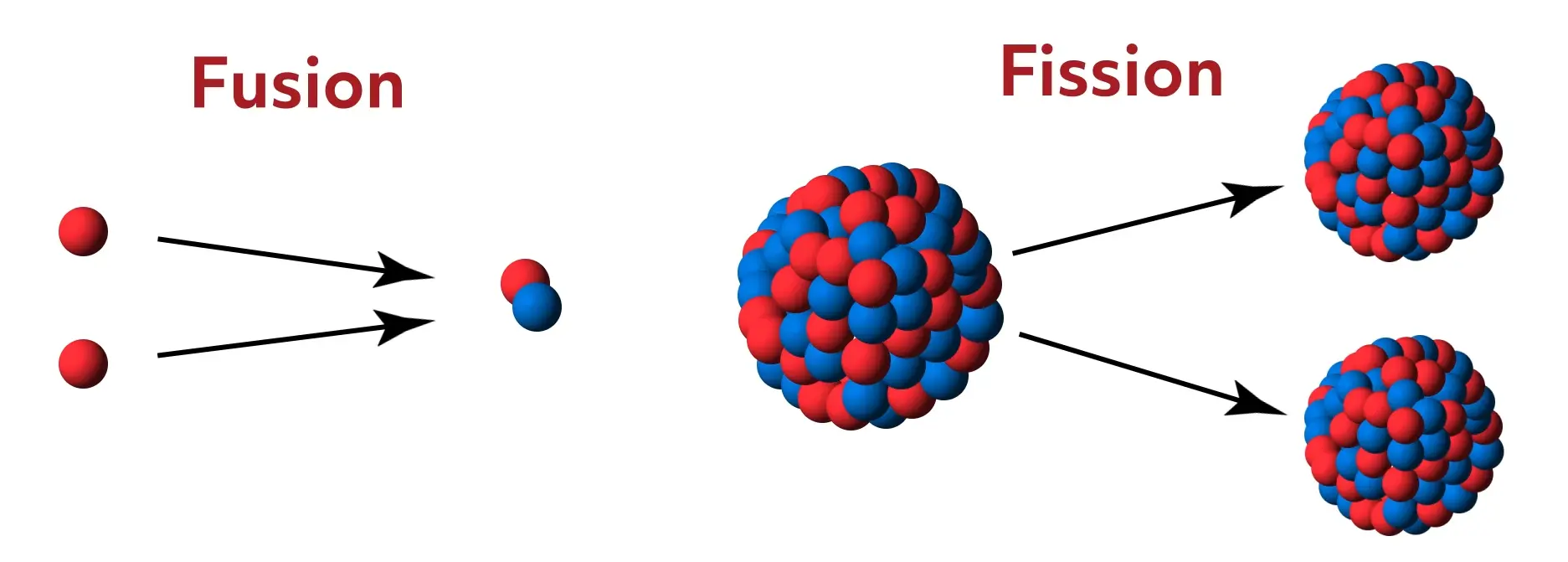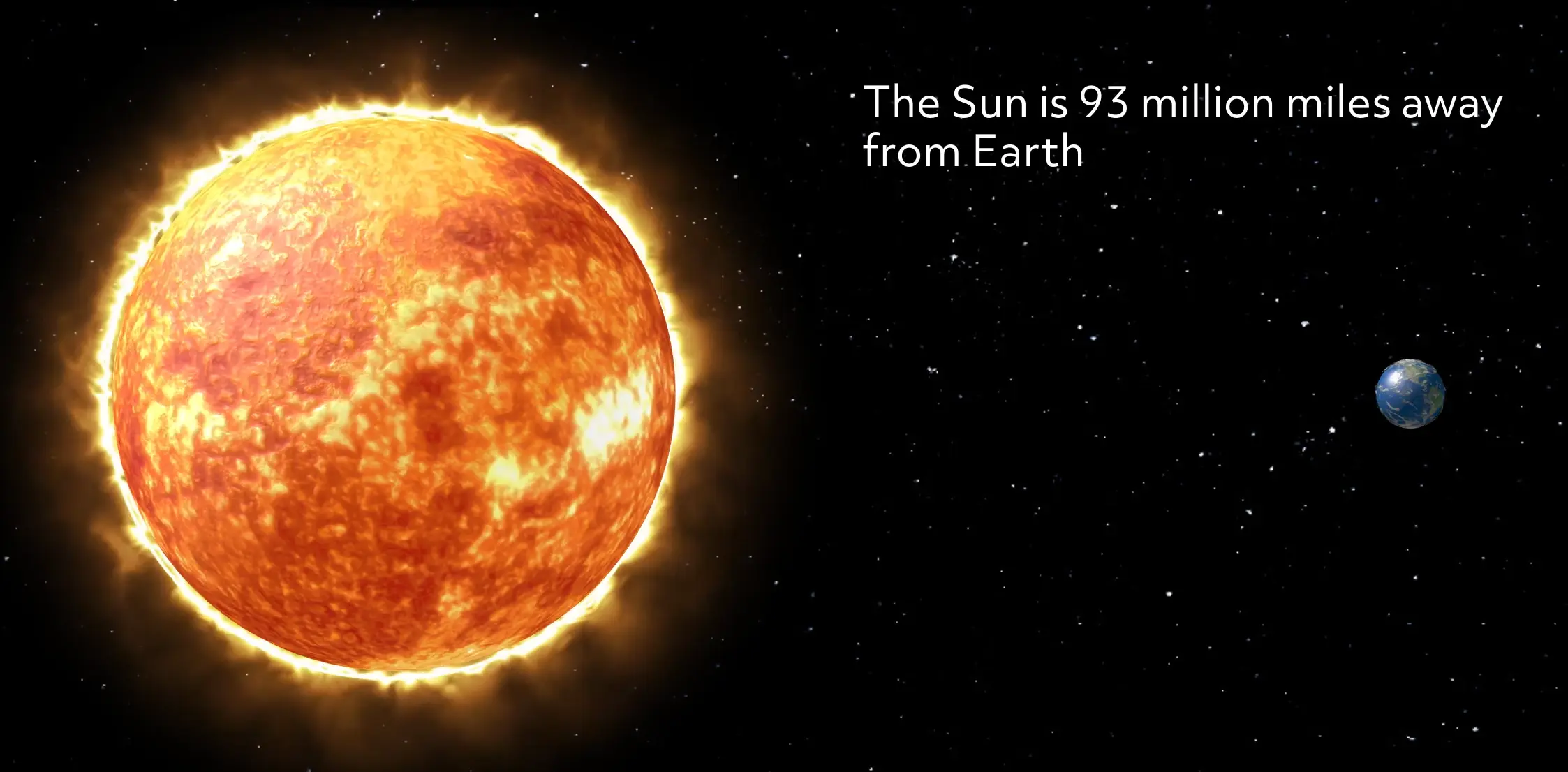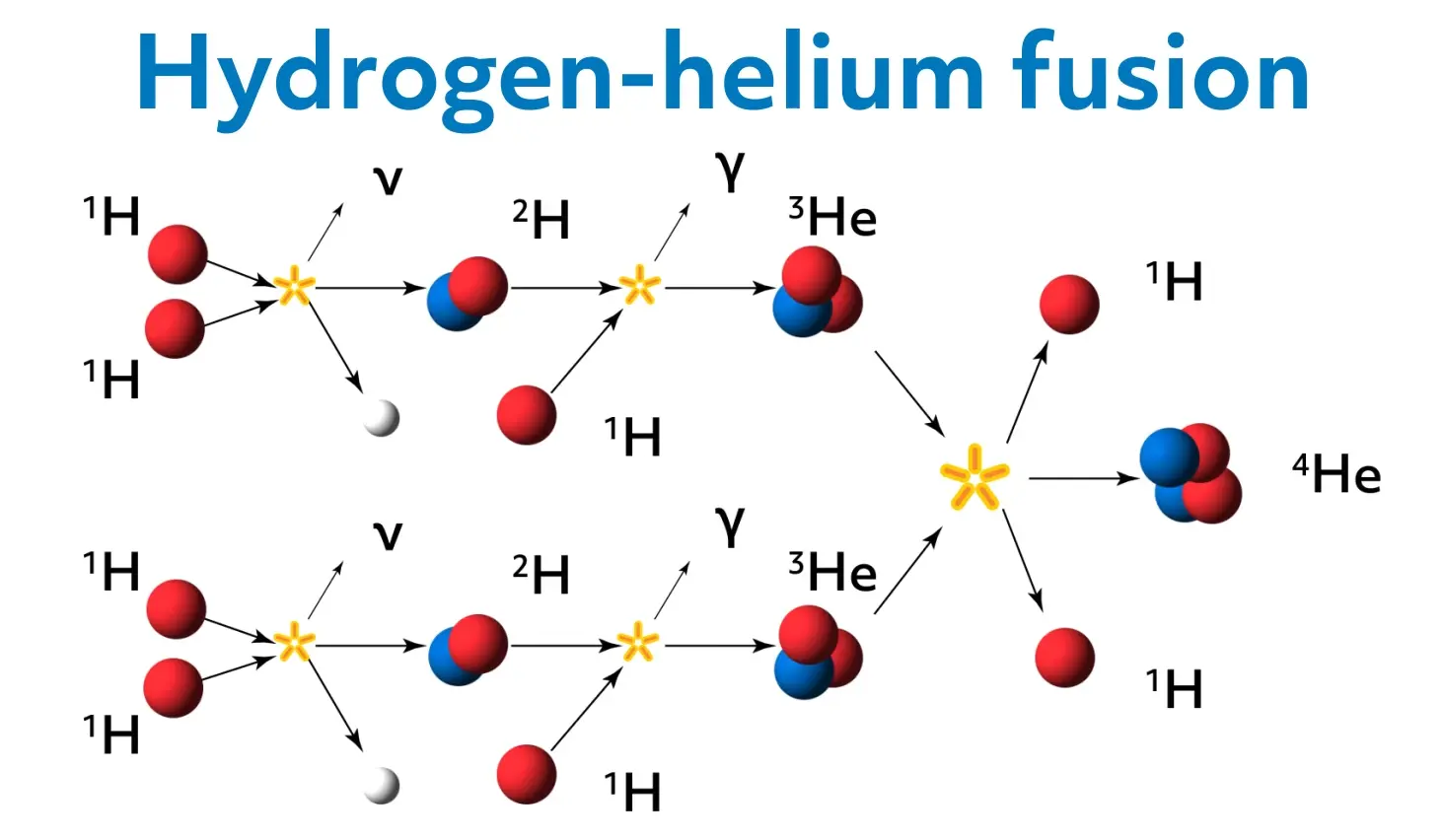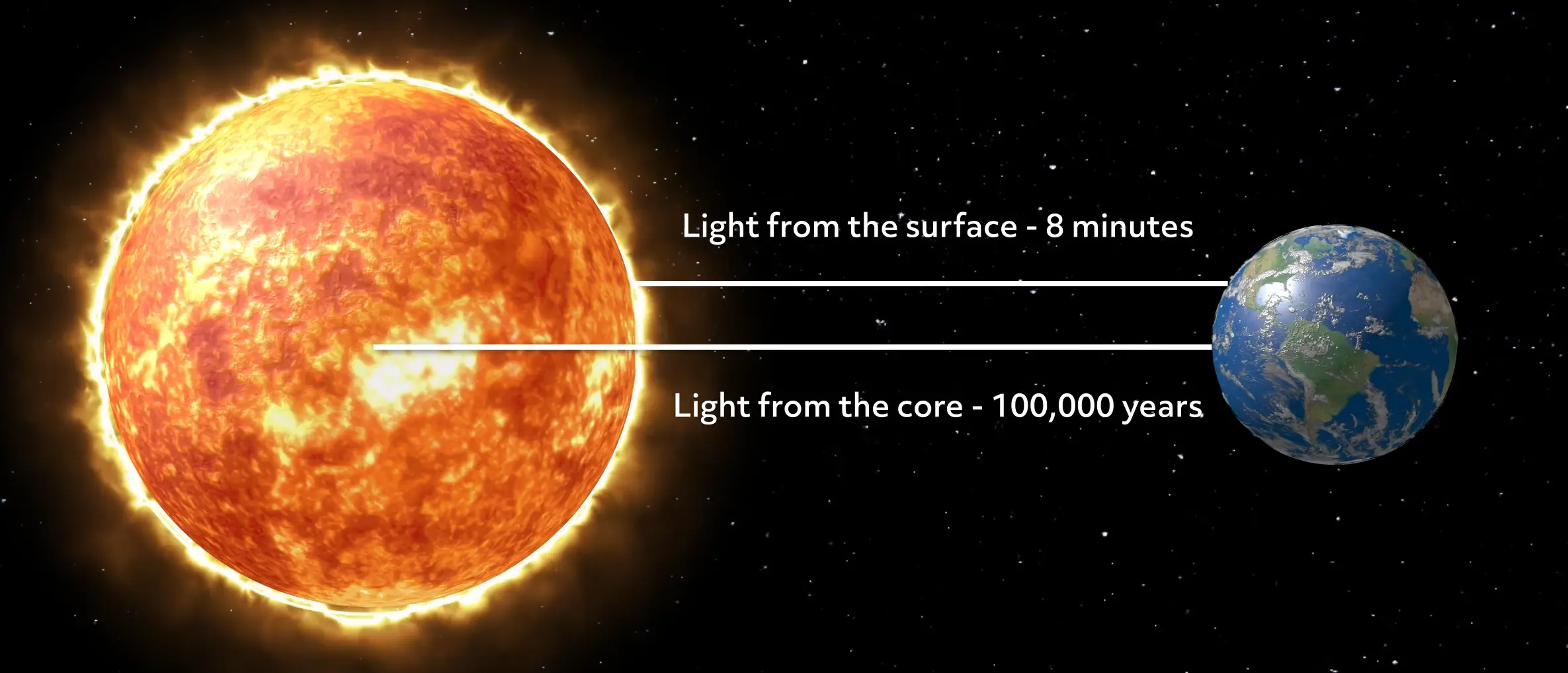
Hi, and welcome to this video about the Sun! In this video, we’ll take a look at what the Sun is and what it’s made of, and discuss the different layers of the Sun’s “atmosphere.” Let’s get started!
What is the Sun?
First thing’s first—what is the Sun? To put it very simply, the Sun is a star. So what exactly is a star? A star is a spherical object of gas that has a few important properties:
- A star emits light.
- A star is held together by gravitational forces trying to crush it and internal high temperature and pressure trying to explode it.
- A star has a core temperature high enough to sustain nuclear fusion reactions.
A star is created when a cloud reaches a certain level of mass, and the denser parts of the cloud core collapse under their own weight. This causes the temperature to reach at least 10 million K. Since most of the gas and dust clouds are mainly hydrogen, the high temperature is enough to initiate nuclear fusion of hydrogen into helium, while releasing a tremendous amount of energy.
Nuclear fusion, if you remember, is taking two or more smaller particles and combining them into a larger particle. This releases much more energy per unit mass than its counterpart, nuclear fission, which is when particles are split apart.

So, that’s what a star is, but let’s delve further into our star, the Sun.
Just like Earth and the other planets in our solar system, the Sun rotates on an axis. However, since the Sun isn’t a solid structure, it doesn’t rotate rigidly like the planets do. In fact, the Sun’s polar regions take about 30 days to complete one rotation, while the equatorial regions take only 24 days. This kind of rotation is known as differential rotation.

In addition to having different rotations, our planet and the Sun also have very different sizes. Compared to Earth, our Sun is huge; in fact, it’s large enough to fit over 100 Earths inside it. It’s also pretty far away, located ~93 million miles away from Earth.

As far away as that is, it only takes 8 minutes for the Sun’s light to travel to Earth at a speed of 186,000 miles per second.
Of course, one of the most notable effects of this sunlight on the planet is heat. Though the heat of the summer sun can feel pretty unbearable to us on Earth, it’s nothing compared to the temperature of the Sun itself.
The temperature of the Sun’s interior varies, ranging from 4,000 to 15 million K. The temperature is hottest at the core and decreases as you get closer to the surface. Beyond the visible surface of the Sun, the temperature begins to increase again, in a region extending outward into space a few million miles.
Let’s take a closer look at the six different layers of the Sun’s atmosphere.
The Core
The core is at the center of the Sun, reaching temperatures of over 15 million K. This layer is where all the nuclear reactions are occurring, including the fusion of hydrogen into helium.

This overall reaction takes 4 hydrogen atoms and produces
- 1 helium atom
- light energy in the form of gamma-ray photons
- 2 particles called “neutrinos”
The neutrino particles have practically no mass and no charge.
While it takes light 8 minutes to reach Earth from the surface of the Sun, it takes light 100,000 years to reach the Earth from the core of the Sun.

In the core, a gamma-ray of light only moves about 13 centimeters in 8 minutes. In fact, the Sun’s core is so dense, that a large number of the gamma-ray photons can’t get far before they’re reabsorbed completely.
Radiation Zone
The next layer is the radiation zone, which occupies about 65% of the Sun’s volume and has a temperature that ranges from 7 million to 2 million K, getting cooler farther from the core. This region is named for how energy is transmitted through it, mainly by radiation.
Convection Zone
The convection zone is the outermost layer of the Sun’s interior, extending from a depth of 125,000 miles up to just beneath the visible surface. This layer is where the heat is transmitted mainly by convection, and the temperature ranges from 2 million to around 6,000 K.
Photosphere
One layer up is the photosphere, the region where most of the visible light is emitted to Earth. It is about 200 miles thick. The photosphere, as viewed from Earth, appears to have a sharp boundary, but the gas here is so hot, the boundary is fuzzy. Temperatures here range from 4,000 to 6,000 K.
Chromosphere
The chromosphere is a thin layer just above the photosphere. Its name means “sphere of color,” referring to its reddish hue seen during eclipses. Here, the temperature begins to increase as you move outward toward the surface of the Sun. The temperature increase is believed to be caused by the magnetic fields of the Sun interacting with atoms in this layer. Temperatures range from around 4,000 to 8,000 K.
The Corona
The chromosphere is believed to play a major role in conducting heat to the outermost layer of the Sun, the corona, which gets its name from the Latin word for “crown.” As I mentioned earlier, the corona extends a few million miles outward and is most easily seen during a total solar eclipse. It’s actually this region that interacts with Earth’s magnetic field and causes the northern lights to appear.
The temperature of the corona can reach over 1 million K. Although the corona has an extremely high temperature, meaning its particles have high speeds on average, there are very few particles in the corona. This means that there isn’t much transfer of energy from this region to an object moving through it. For instance, a spacecraft moving inside the corona wouldn’t burn up.

So, how were humans able to discover and measure these layers of the Sun in the first place? As it turns out, we just used an altered version of seismology, which we use to detect the layers of the Earth. This altered method is called helioseismology.
Waves are sent through the Sun’s interior due to disturbances mainly in the convection zone. These waves then interact with the material they’re moving through, which allows them to be measured. The Sun also produces sound waves that move, bend, reflect, and interact in a way that allows us to determine the densities, thicknesses, and even temperatures of these atmospheric layers. This diagram shows the variety of reflections and refractions that occur when acoustic waves move through the interior of the Sun.
All of the waves in the Sun’s layers change their direction when moving from a less dense medium into a more dense medium. This is because wave speed changes when the density of the medium through which they’re moving changes. In general, waves can do three things when moving from one medium into another: reflect, refract, and transmit. Therefore, measuring sound waves moving through different media in the Sun tells us a lot about the physical properties of its layers.
Now, part of why it’s important to learn all of this information about the Sun is because so much of this information can be applied to all the other stars and planetary systems in the universe. As our ongoing inquiry of the Sun continues, we continue to make more and more discoveries of the nature of matter, as well as the history and future of our planet and the universe.
Okay, before we go, here are a couple of review questions to test your knowledge.
1. Which layer of the Sun is the hottest?
- The core
- The photosphere
- The radiation zone
- The corona
2. Which two elements are involved in the nuclear fusion reactions happening in the Sun’s core?
- Hydrogen and oxygen
- Nitrogen and hydrogen
- Hydrogen and helium
- Nitrogen and helium
That’s all for this review! Thanks for watching, and happy studying!
